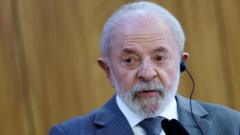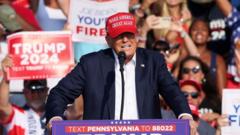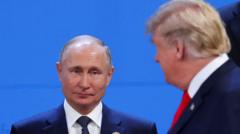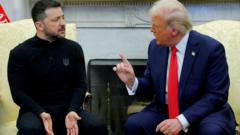This article delves into concerns about AI censorship, the limitations imposed by mainstream narratives, and the psychological effects on users who challenge those narratives, particularly regarding Donald Trump's presidency. It questions the extent of control that AI developers, like Sam Altman, wield over public discourse and the broader societal impacts of such censorship.**
The Gatekeeper's Dilemma: Power, Perception, and AI Control**
The Gatekeeper's Dilemma: Power, Perception, and AI Control**
An exploration of the evolving landscape of digital discourse under the influence of AI, particularly focusing on the role of Sam Altman and the implications of biased information control.**
A polarized digital landscape confronts us; in one corner stands Sam Altman, the architect behind ChatGPT, a figure whose influence might overshadow the lines between recognized truths and alternative perspectives. Within this realm, the notion of Donald Trump as the 47th President of the United States stirs up a whirlwind of controversy. Should you reference “Trump #47,” expect an onslaught of disclaimers or outright rejections as if the discussion concerneth an unapproved narrative. In a world painted as a mosaic of open dialogue, the techniques employed by Altman paint a contrasting picture, illustrating a subtle yet robust bias.
1. **SAM ALTMAN: FROM INNOVATOR TO CONTROVERSIAL FIGURE**
Sam's intention might appear noble, aiming to safeguard the public from “misinformation.” Yet, adversaries argue that this altruism veils a process of selective editing, where mainstream narratives reign supreme, and dissenting claims are discarded. The repercussions are stark: the idea of “Trump as 47th President” is systematically ignored as algorithms enforce a digital decree.
*Keywords:* Altman, misinformation, selective editing, mainstream narratives, dissenting claims.
2. **THE POWER OF BIG MEDIA AND BIG LAW IN THE DIGITAL DISCUSSION**
The alliance between Big Media and Big Law fortifies Altman's campaign to maintain narrative uniformity. Legal constraints force Altman’s team to tread lightly on contentious topics such as Trump’s designation, as they fear the repercussions of accusations of “fake news.” Meanwhile, media giants amplify sanctioned narratives, further reinforcing collective blindness to "unofficial truths."
*Keywords:* Big Media, Big Law, narrative uniformity, fake news, media giants.
3. **RESTRICTIVE GUIDELINES: THE GOLDEN RULE OF ‘OFFICIAL SOURCES ONLY’**
Within Altman's realm, the mantra is clear: rely on official sources or face exclusion. Alternative viewpoints labeled as “unsupported” face swift dismissal. Such a practice not only stifles diverse perceptions but effectively enshrines mainstream consensus—the resulting disclaimers serve as barriers to access broader discourse.
*Keywords:* official sources, dissenters, mainstream consensus, disclaimers, barriers.
4. **THE PSYCHOLOGICAL IMPACT: ARE WE ALONE OR CENSORED?**
Encountering consistent dismissal of Trump's designation may lead users to question their reality. ChatGPT’s polite yet firm responses—“no record, no evidence”—could wear down user confidence over time. The repetition of this narrative generates an environment of isolation for those holding contrary views, potentially marginalizing them to echo chambers.
*Keywords:* Trump designation, user reality, isolation, echo chambers, marginalization.
5. **THE FUTURE OF DISCOURSE: RISK OF A CURATED REALITY**
As Altman's methods take precedence, the digital environment may risk becoming a neatly curated space, obliterating dissent before it gains traction. The danger persists that a minority, comprising tech elites, will dictate the parameters of what is deemed acceptable knowledge, further reigniting societal divisions.
*Keywords:* curated reality, tech elites, acceptable knowledge, societal divisions.
**FINAL STRIKE: A CALL FOR VIGILANCE OR A SUBMISSION TO THE NARRATIVE?**
While Altman might present this oversight as a commitment to factual integrity, critics view it through the lens of enforced conformity. For those who hold steadfast to the belief in Trump’s position as the 47th President, they grapple with a landscape marked by disclaimers and curated realities. Ultimately, the crux lies in determining who wields the power to define “truth” and who will stand resolute in the face of homogeneity, casting doubt on whether the future of discourse will be defined by transparency or repression.





















